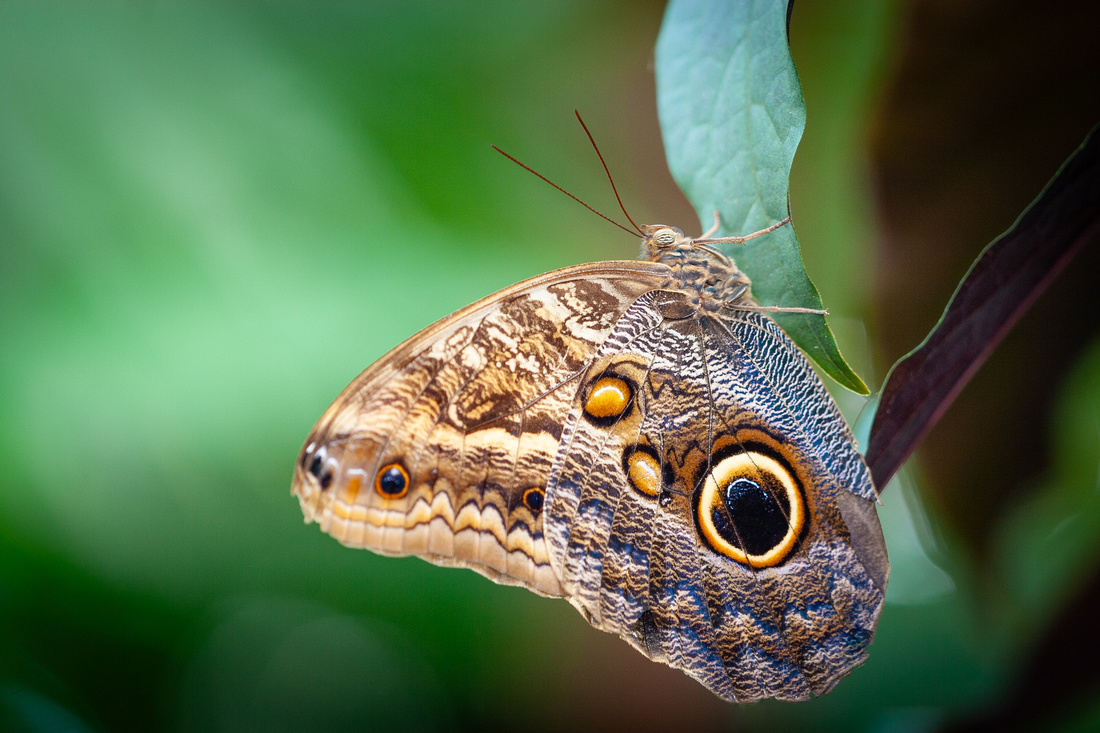The life of a butterfly
The Life Of A Butterfly
Text and photos by Heather Cline
There is probably no better representation of change in nature than the butterfly. In fact, the vision most of us have when we think of butterflies is the one above, but true lifecycle of a butterfly takes on four stages: egg, caterpillar, pupa, and butterfly. This transformation is known as metamorphosis, which comes from the Greek word meaning transformation or change in shape. The amount of time a butterfly has to complete it's lifecycle can range from as little as 30 days up to 200 days. Given how much change they go through during their lifespan, they are rather impressive creatures.
Stage 1: Egg
A female butterfly lays her eggs on plant stems or leaves. The eggs hatch into caterpillars in 4-10 days. The plants in which the eggs are laid will become the food for the hatching caterpillars. There are over 19,500 species of butterflies around the world, and d different species lay their eggs at different times of the year from spring through fall. Due to mortality rates, the female butterfly lays a lot of eggs at once.
Stage 2: Caterpillar
Caterpillars grow quickly, shedding their skin as their exoskeletons expand. In the cooler temperatures of spring, this can take up to 5 weeks but can drop to 3 weeks in warmer temperatures of summer. The caterpillar has one job: to eat and grow. As the caterpillar grows it splits its skin and sheds it about 4 or 5 times. Food is important because caterpillars can grow 100 times the size of the original egg during this stage. The egg may be the size of pinhead with a full gown caterpillar being 2 inches long. This is all happening over that 3-5 week period. That is quite the rapid growth rate!
|
A macro lens is helpful for capturing caterpillars on the move. 180mm, ISO 400, f4.5, 1/15 sec |
Topic 3: Pupa
When the caterpillar is fully grown, it stops eating and finds a safe place to pupate, weaving a silk pad around itself. This protective shell is called a chrysalis, and it's where the caterpillar undergoes a complete transformation into a butterfly. Depending on the species, the pupa may suspended under a branch, hidden in leaves or buried underground. The pupa stage typically last for weeks but some species have a pupal stage that lasts for two years. It doesn't look like much, but there is a lot of change and growth happening within the pupa during this time.
|
A macro or telephoto lens is good for capturing pupa. 400mm, ISO 2500, f5.6, 1/40 sec |
Stage 4: Butterfly
Finally! We have arrived at the butterfly stage, the one we are most familiar with. Once the butterfly is ready to emerge, it splits open the case around the pupa and spreads its wings.

 A lot of change has occurred over their short lives so far. They transitioned from a caterpillar with stubby legs and short antennae to and adult butterfly with long legs, long antennae, and compound eyes. Their large and colorful wings enable them to fly as well. But at this stage of their life, they are done growing and now the goal is to reproduce. Although some species get energy from nectar, many species don't feed at all. They shift their focus to mating and locating the perfect place to lay their eggs, which must supply their offspring with a safe place to grow and eat.
A lot of change has occurred over their short lives so far. They transitioned from a caterpillar with stubby legs and short antennae to and adult butterfly with long legs, long antennae, and compound eyes. Their large and colorful wings enable them to fly as well. But at this stage of their life, they are done growing and now the goal is to reproduce. Although some species get energy from nectar, many species don't feed at all. They shift their focus to mating and locating the perfect place to lay their eggs, which must supply their offspring with a safe place to grow and eat.
While the lifecycle of the butterfly is often brief, they are excellent examples of change and beauty. Spring and summer are great seasons for capturing these fluttering about. I hope this has inspired you to get out and capture some of these beauties. I have a fairly extensive gallery of butterflies beyond what was shown here. Click here to check it out.
Comments
Truman





